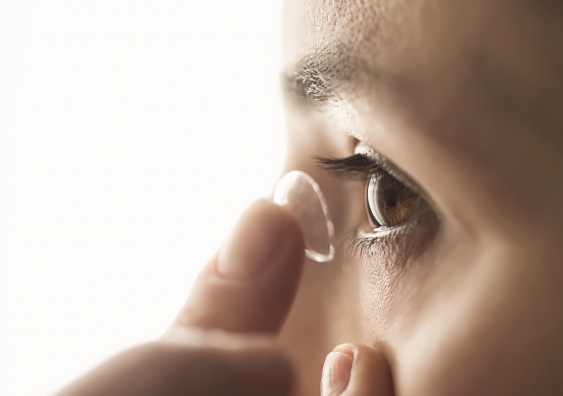Reusable contact lenses increase risk of rare preventable eye infection: study
Simple changes to contact lens use could prevent many cases of sight-threatening eye infection.
Simple changes to contact lens use could prevent many cases of sight-threatening eye infection.

Maddie Massy-Westropp
UNSW Medicine & Health
m.massywestropp@unsw.edu.au
People who wear reusable contact lenses are nearly four times as likely as those wearing daily disposables to develop a rare sight-threatening eye infection, a study by UNSW Sydney, University College London (UCL) and Moorfields Eye Hospital researchers finds.
The case control study, published in Ophthalmology, identifies multiple factors that increase the risk of Acanthamoeba keratitis (AK), including reusing lenses or wearing them overnight or in the shower.
“Previous studies have linked AK to wearing contact lenses in hot tubs, swimming pools or lakes, and here we have added showers to that list, underlining that exposure to any water when wearing lenses should be avoided. Public pools and coastal authorities could help reduce this risk by advising against swimming in contact lenses,” said first author Scientia Associate Professor Nicole Carnt at UNSW Medicine & Health, UCL Institute of Ophthalmology and Moorfields Eye Hospital.

Associate Professor Nicole Carnt, of UNSW Medicine & Health, is the first author of the study. Photo: Supplied.
“Contact lenses act as a vector to transport and retain the microbes close to the eye allowing a greater opportunity for infection to occur, compared to not wearing contact lenses,” Associate Professor Carnt said.
In the developed world, contact lens use is now the leading cause of microbial keratitis – corneal infection – in patients with otherwise healthy eyes. Sight loss resulting from microbial keratitis is uncommon but Acanthamoeba, although a rare cause, is one of the most severe and is responsible for about half of those contact lens users who develop sight loss after keratitis. Ninety per cent of AK cases are associated with avoidable risks.
AK causes the front surface of the eye, the cornea, to become painful and inflamed, due to infection by Acanthamoeba, a cyst-forming microorganism. The most severely affected patients – a quarter of the total – end up with less than 25 per cent of vision or become blind following the disease and face prolonged treatment. Overall, 25 per cent of people affected require corneal transplants to treat the disease or restore vision.
For the study, the researchers recruited over 200 patients of Moorfields Eye Hospital who completed a survey. The researchers compared 83 people affected by AK with 122 other patients who came to eyecare clinics with other conditions, who acted as a control group.
People who wore reusable soft contact lenses – such as monthlies – had 3.8 times the odds of developing AK, compared to people who wore daily disposable lenses. Among daily disposable wearers, showering with lenses in increased the odds of AK by 3.3 times, while wearing lenses overnight increased the odds by 3.9 times. Reusing daily disposable lenses increased the infection risk by 5.4 times. Having had a recent contact lens check with a health professional reduced the risk.
With further analysis, the researchers estimated that 30-62 per cent of cases in the UK, and potentially in many other countries, could be prevented if people switched from reusable to daily disposable lenses.
Read more: How to keep your contact lenses clean (and what can go wrong if you don't)
“Contact lens packaging should include information on lens safety and risk avoidance, even as simple as ‘no water’ stickers on each case, particularly given that many people buy their lenses online without speaking to a health professional,” said co-author Professor John Dart of UCL Institute of Ophthalmology and Moorfields Eye Hospital.
“Basic contact lens hygiene measures can go a long way in avoiding infections, such as by thoroughly washing and drying your hands before putting in your lenses.
“In recent years we have seen an increase of Acanthamoeba keratitis in the UK and Europe, and while the infection is still rare, it is preventable and warrants a public health response.”